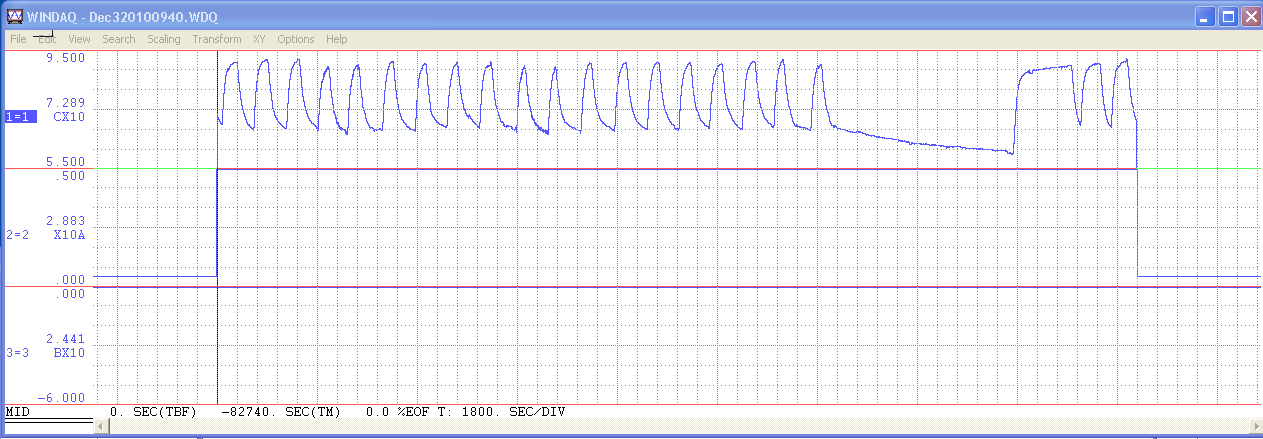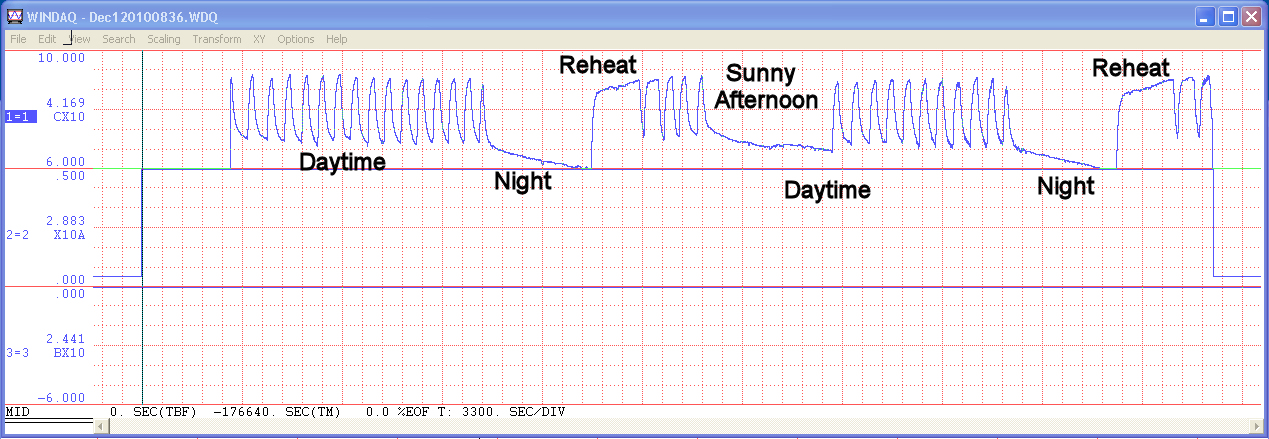Furnace ON Time
Does a set-back thermostat really save any fuel?
Last Revised: October 22, 2023
Home
Contact Us
Introduction
Here's the question:
Does a setback thermostat really save you any fuel cost?
For our house and the way we live, the answer is "hardly none".
I hooked up a simple thermistor to the DAU (Data Acquisition Unit) that's hanging off the back of my computer
and have been graphing "furnace-on" events for several days. We stay up till about midnight or so and then the
thermostat goes from 74 degrees F down to 65 degrees F until morning. The thing is set to go back to 74 degrees at
8AM, but it
anticipates for us, so on real cold days it starts in as early as about 5:30AM. The amount of time it takes to get
house back to 74 degrees F is almost equal to the amount of time that the furnace would have been running if there was no
setback.
During the night, the house hasn't ever gotten down to 65 degrees F before the furnace came out of setback.
Some googling on the subject sorta confirms what I found.
The general answer is: "it depends". They say that the worse your insulation, the more a setback thermostat can
cut energy bills.
My measurement process:
I use a Radio Shack "Sensor Lab" to make up simple circuits. I bought a 9volt battery eliminator for it so I don't
keep wearing out 9 volt batteries.
I put the thermistor right on top of the closest wall register.
The thermistor is simply in series with a 10K ohm pot across the 9 volt supply and I took the signal across the wiper
arm of the pot and ground. These two leads connect to one of the inputs on my Dataq DI-194RS $25 (now $50)
DAU, which connects to the computer through a serial port. The software that came with it makes the graphs.
Only the top trace is active on the graphs referenced below. The units are volts.
The range I chose is simply to give me a fairly full chart excursion. The peak voltage corresponds to about 108°F
and the overnight min is about 63 degrees F.
Here's a graph of our home furnace cycling rate for a typical 24 hour period with a cloudy day.
The graph starts at about 08:30.

Here's a graph of our home furnace cycling rate for about 2 24 hour periods with a sunny day
then a cloudy day:

What have you found?


